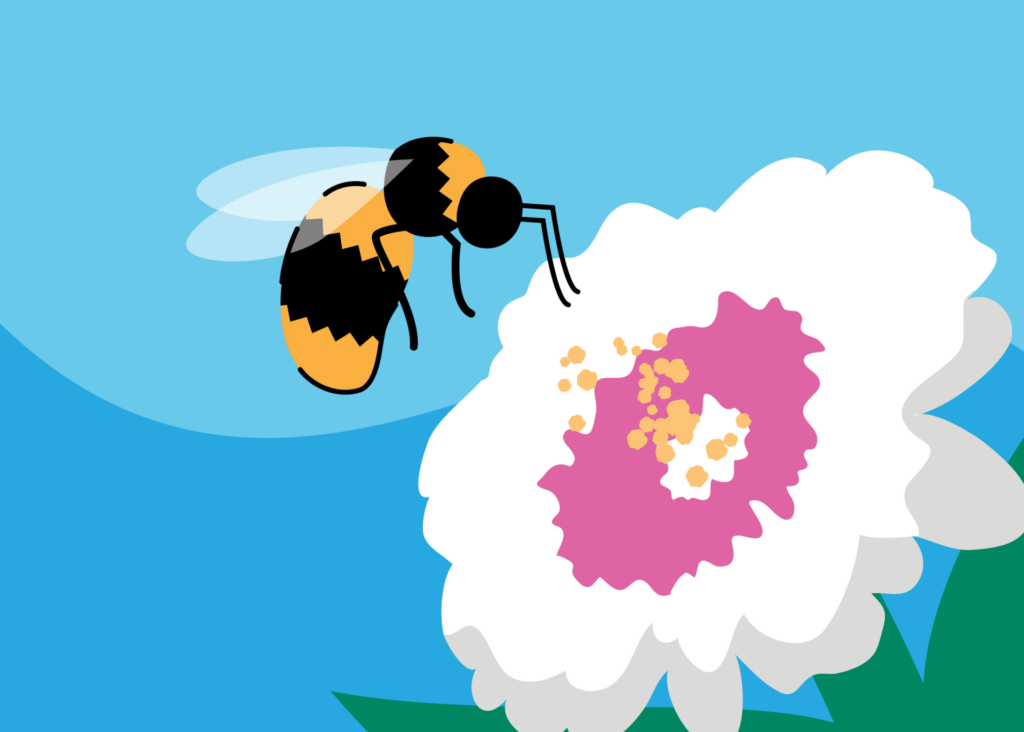*This post has been revised in April, 2024 to reflect more accurate information.
After a long but mild winter, spring has finally sprung and plants are coming back to life! For many, this is a time of celebration and spending time outdoors. But for others, spring marks the return of chronic allergy and asthma symptoms. Those individuals and their loved ones are likely already asking themselves: when does pollen season end?
Mother Nature has natural rhythms but is rarely precisely consistent. There are many factors that affect the intensity and length of pollen season. Below, we’ll explore some factors that determine how extreme pollen season is and — most importantly — when pollen season might end.
Average Pollen Seasons in Central Virginia
Pollen season typically begins in early spring when temperatures rise enough to stimulate new plant growth. Each plant — including types of trees, weeds, and grasses — has its own growth temperature, and the beginning of pollen season is determined by the types of allergen-producing plants most common in our region.
According to a study published by the USA National Phenology Network, the Southeast has undergone a remarkably early spring bloom. A mild winter and rising global temperatures have allowed our plants to begin their bloom earlier, with some parts of Virginia seeing fresh blooms as early as February 1.
Allergy season usually ramps up throughout February and calms down in October, but much of the American Southeast is weeks ahead of schedule this year. Parts of the Southeast, lower Midwest, mid-Atlantic, and New York City area are seeing their earliest spring bloom on record.
What Makes for a Worse Allergy Season?
Allergy season may be starting earlier this year, but will it also be worse? In short: yes. A few contributing factors over the past few months have set us up for a long, hard allergy season in 2024:
Earlier spring temperatures
Rising temperatures and early spring blooms mean grasses and trees will have a longer growing season, enabling them to grow larger and produce more pollen before temperatures cool in the fall. Plus, this year, we experienced early spikes of heat followed by returns to near-freezing temperatures. This has caused pollen to be gradually released into the air for a couple of months.
A wet, mild winter
Remarkably mild temperatures between fall 2023 and spring 2024 means plants that could have died due to frost over the winter might have even survived, meaning they will have to spend fewer calories to grow into allergen-producing monsters this spring. Ragweed pollen, in particular, will be particularly abundant in late summer and early fall this year.
Increased carbon dioxide emissions
Increased carbon dioxide in the atmosphere has been linked to increases in plants’ production of allergens, as well as exacerbated symptoms in allergy sufferers. Plants like poison ivy produce a more potent form of urushiol, its allergenic substance, when carbon dioxide levels are higher. Carbon dioxide, tree pollen, and air pollution in cities can combine to cause extreme allergy symptoms and asthma attacks within their populations.
How to Manage Allergy Symptoms
This year’s early spring and potential for exceptional pollen counts mean asthma and allergy sufferers should be extra diligent in managing their symptoms this year.
Check the weather for pollen levels if you plan to spend a lot of time outside.
Weather apps and websites like pollen.com report pollen counts and forecasts daily. Check these resources whenever you plan to enjoy the great outdoors so you can prepare (or change your plans) if pollen counts are too high. Depending on the severity of your allergy symptoms, you may want to wear protective gear or simply stay inside until pollen levels subside.
Talk with your doctor about over-the-counter options or even allergy shots.
Allergies can have a major impact on your overall health, so treat them as seriously as any other chronic medical condition. Talk to your doctor or an allergist to develop a plan of action before pollen takes over. Your doctor might recommend over-the-counter medications, prescribe antihistamines, or even suggest immunotherapy, including allergy shots, to desensitize your body to pollen and other allergens.
If you have pre-existing conditions, like asthma, try to minimize pollen contact.
The relationship between asthma and allergies is strong, as both affect the respiratory and immune systems and can be life-threatening. If you have a chronic condition that is aggravated by pollen, avoid exposure when pollen counts are high. If staying indoors on warm, breezy, high-pollen days is not an option, work with your doctor or allergist to develop a personalized care plan that addresses all of your chronic conditions and allergy symptoms.
Wear masks to help reduce how much pollen you breathe in.
The COVID-19 pandemic made masks much more common in the United States and spurred research proving that wearing a mask can reduce one’s exposure to pollen and other allergens. Wearing a mask can reduce the amount of pollen you inhale, which can reduce your body’s inflammatory response in general. People wearing masks found that they had fewer hives, less itchy eyes, and a significant reduction in sneezing and other sinus-related symptoms.
Work with your doctor on prevention and treatment
For some, seasonal allergies are just starting. But for others, the fight against allergy symptoms continues year-round. Allergies can keep your body in a constant state of inflammation or cause acute attacks that require emergency treatment. Work with your medical providers to determine what you are allergic to and how severely, and have plans in place for both prevention and intervention in case of an allergic reaction.
Are you suffering from seasonal allergies? Contact your doctor, and if you’re local to LYH, make an appointment at the Community Access Network today.
Call us: 434-818-7880
